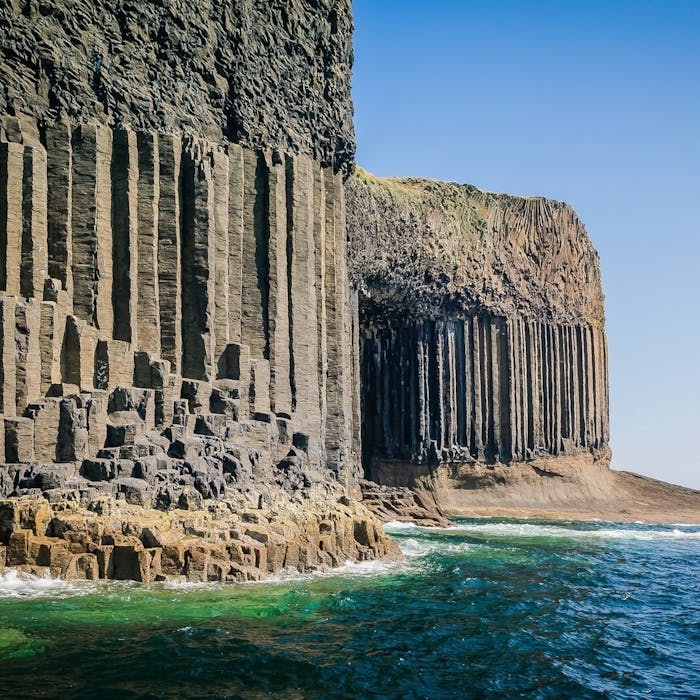
Fingal's Cave - a volcanic geological inspiration
Fingal's Cave is a sea cave on the uninhabited island of Staffa, in the Inner Hebrides of Scotland. It is known for its dramatic shape and natural acoustics. It is formed entirely from hexagonal basalt columns, similar in structure to the Giant's Causeway in Northern Ireland.
It has been a natural curiosity, drawing visitors for many years.
The cave's structure is unique, with the remarkably symmetrical hexagonally jointed basalt created when lava from volcanic eruptions cooled some 60 million years ago. The large arched entrance provides access to the sea. From the inside, the entrance seems to frame the island of Iona across the water.
The cavern became known as Fingal's Cave after the hero of an epic poem by 18th century Scots poet James Macpherson, part of a cycle based on old Scottish Gaelic verse. The name 'Fingal' means 'white stranger'. In Irish folklore, giant Fionn mac Cumhaill built the Giant's Causeway (see separate Six Things item)..
Fingal's cave was first brought to the attention of the English-speaking world by naturalist Sir Joseph Banks in 1772, who was on route to Iceland on a natural history trip. He wrote 'Compared to this, what are the cathedrals and palaces built by men!'.
Staffa Island, and Fingal's Cave, soon became a popular part of the cultural grand Tour of Europe. Amongst visitors were Queen Victoria, as well as Romantic poets Scott, Keats and Wordsworth - who all wrote about their visits in verse. Such was its renown that a piper was employed to play in the depths of Fingal’s Cave to give visitors ‘additional atmosphere’.
Fingal's Cave also inspired Felix Mendelssohn's iconic overture 'The Hebrides', after he visited Staffa in 1829. It is said the composer immediately noted down the opening theme for his composition after first seeing it. In 1832, British artist JMW Turner made a painting called Staffa, Fingal's Cave.
Several sightseeing cruises pass the entrance to the cave and, in suitable conditions, some smaller ships can dock at the island's landing place. A crude walkway of fractured columns allows exploring visitors to go far inside.
Further reading
Links to external websites are not maintained by Bite Sized Britain. They are provided to give users access to additional information. Bite Sized Britain is not responsible for the content of these external websites.
